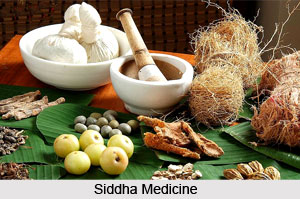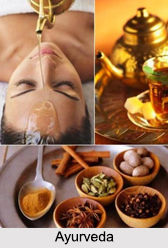 Ayurveda uses the principles of nature`s understanding known as the `Panchamabhuta` or the theory of five great elements. This conceptual model of Panchamabhuta encompasses everything in physical creation that is composed of five fundamental building blocks of nature called elements. The five popular elements are known as earth, air, fire, water and space.
Ayurveda uses the principles of nature`s understanding known as the `Panchamabhuta` or the theory of five great elements. This conceptual model of Panchamabhuta encompasses everything in physical creation that is composed of five fundamental building blocks of nature called elements. The five popular elements are known as earth, air, fire, water and space.
Ayurveda recognizes the element of space to be the first and the most basic of the five elements. These elements are supposed to be the most fundamental properties of physical creation. Ayurveda takes a subjective approach to understand the existence of the unseen laws of nature`s functioning. These universal organizing principles are known as cosmic elements or `mahabhutas`. Space or `akash` is defined as the subtlest of the bhutas. It serves as a medium in which the other bhutas or elements can manifest. Nothing in the universe can exist nor can any process take place without the element of space.
Ayurveda defines that the objects in creation exist in relationship to one another by virtue of akash or space. This element creates the relationship and allows having the knowledge of things within the perceptual field. In Ayurveda, it is stated that the essential nature of space or akash is free of objects and that is why non-resistance is one of its basic properties. After non-resistance, the second fundamental quality of space is sound. It is a known fact that sound propagates by virtue of space. The fact, which is not so apparent is that sound is actually born out of the creation of the space. If at any time there is a sudden separation between the particles or objects which have been bound together, sound occurs.
One of the very common such type of instance is occurrence of a snap sound because of breaking of a stick or a chalk. While writing on a board with the help of chalk some sort of scraping sound can be heard. In both the cases (breaking of a stick or writing on a board with a chalk), space is suddenly created in between that is why sound occurs. When people talk, they send pressurized air across the vocal cords. Variations in the tension of these folds of tissue and the shape of the mouth change the capacity of the particles or objects present in the air to expand or to separate from one another thus creating sound. The several sounds which the voice produces are actually dependent on specific modulations of the space within the throat and the mouth. Greater mass creates greater resistance of sound. Close relationship exists between each bhuta or the building blocks of the nature and the sense organ of the body. The ear is the akash`s corresponding sense organ. This sense organ is a hollow and spacious structure comprising thin and light bones and actually the smallest porous bones of the body. This sense organ is responsible for converting sound from the environment into neural impulses.
Space or akash`s predominance inn the entire structure of the organ of hearing is responsible for the production of sound.




















